The 6 Most Common Types of Wood Joints
Whether you’re having your first crack at carpentry or just want to brush up on your joinery knowledge, you’re in the right place. And when it comes to joining wood, there are more than a few ways to put one-and-one together.
In this article, we’ll take you through some common kinds of wood joints, what they’re good for, and how tricky it is to pull them off. These are just the most popular ones, but there’s plenty more out there to play around with once you get the well-known ones nailed down.
Butt Joint
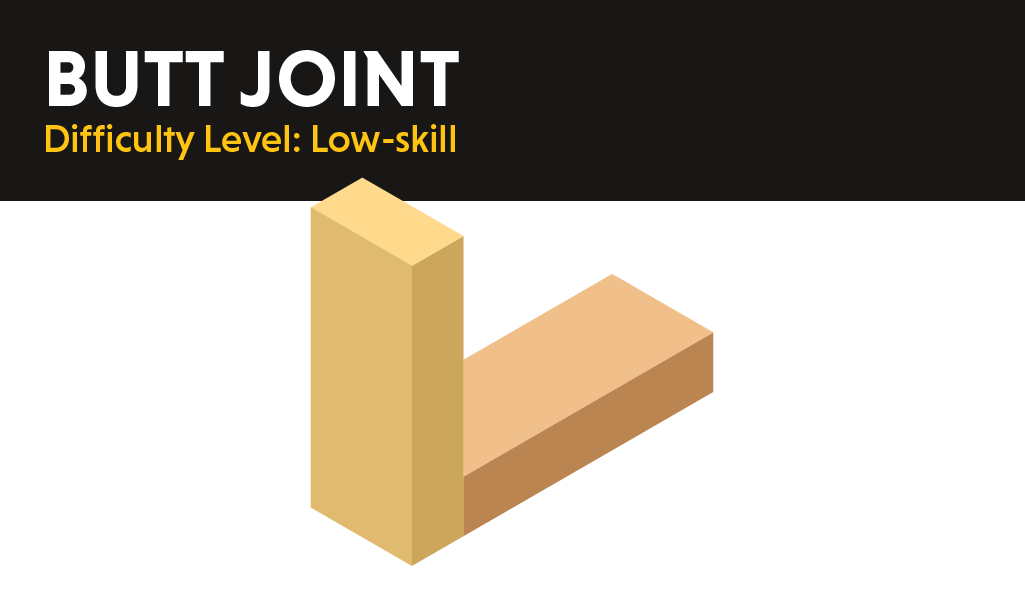
Description: This trusty type is the bread and butter of wood joints. Simply put, butt joints are formed when the end of one piece of wood is attached at a right angle to another, either using glue, screws or other sorts of fasteners. This joint type is amongst the weakest, so you may want to reinforce it or opt for a stronger joint type for projects where strength is a big priority.
Difficulty Level: Low-skill
Benefits & Uses:
- The most simple joint type to make
- Speedy construction
- Can be reinforced with dowels, or screw pockets etc, to create a stronger joint
Tongue & Groove
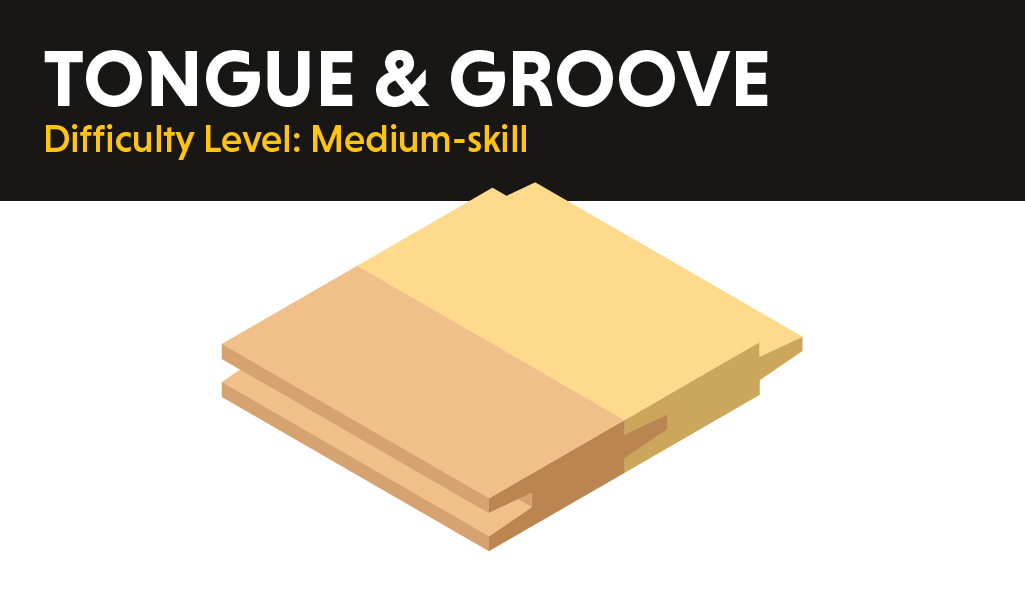
Description: To join up wood edges that need to be flat and parallel to each other, such as for flooring, a popular choice is a tongue & groove joint. Sounds odd, but the ‘tongue’ refers to cutting out a raised protrusion along the length of the board, while the board it’s joining to will need a ‘groove’ carved out along the length of its adjoining edge for the tongue to slot into. Glue may not always be needed, it just depends on what the application is.
Difficulty Level: Medium-skill
Benefits & Uses:
- Easy interlocking system
- Keeps out rain and precipitation
- Common uses include flooring, tabletops, panelling and other flat surfaces
Biscuit Joint
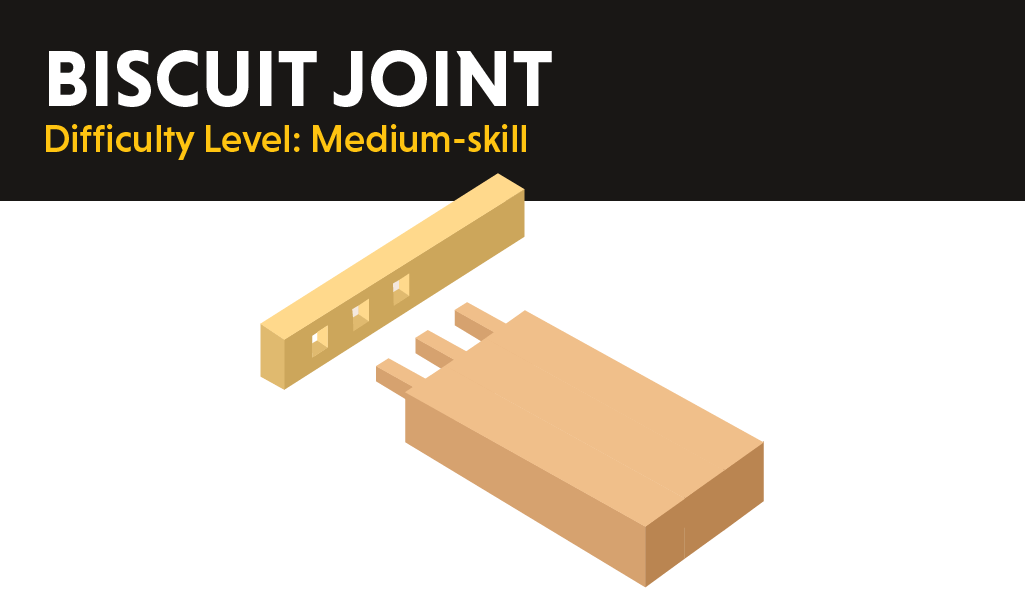
Description: Fancy something different? Another way of connecting wood edge-to-edge, end-to-end or at right angles is to use a biscuit joint. This technique works by cutting grooves into pieces of wood and using small, oval-shaped and wafer-like wooden pieces, also known as biscuits, to join them. The biscuits are often made of compressed wood, usually beech, and are glued into the grooves to join the pieces of wood together – their flat shape gives that bit of extra strength and durability.
Difficulty Level: Medium-skill
Benefits & Uses:
- Useful for tabletops, picture frames, panelling, and other low to medium-strength needs
- Quick way to align wooden parts
- Good way to reinforce a butt joint
Lap Joint
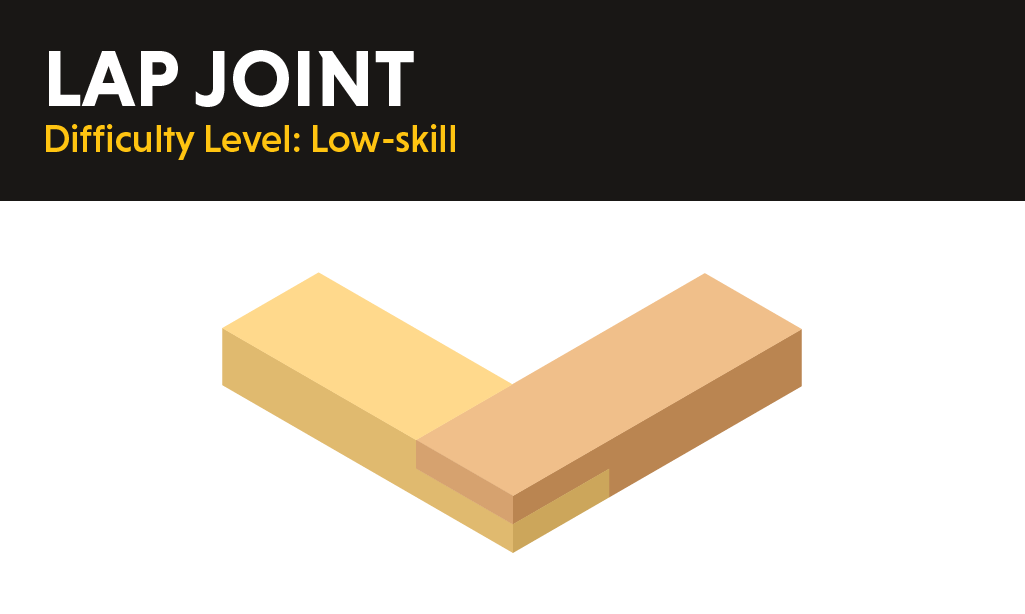
Description: Lap joints can be used to connect two wood ends together for corner joints, or for connecting wood in the middle to make T-joints or cross laps. The two wooden pieces that are to be joined must each have a small section or square removed so that the thickness is reduced to half – the two thinned sections on the wood can then lock together to match the thickness of the rest of the wood. This creates an overlapping appearance which can be used in frame creation.
Difficulty Level: Low-skill
Benefits & Uses:
- Quick and easy to make
- Can be easily reinforced with mechanical fasteners
- Primarily used to make frames, braces and tables
Mortise & Tenon Joint
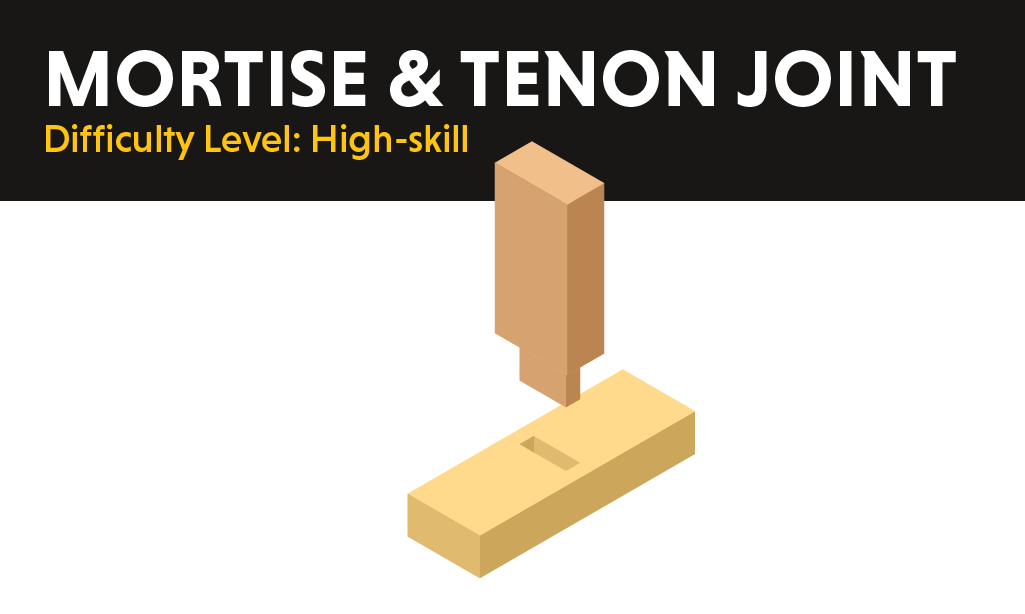
Description: The go-to way to make corner joints, mortise and tenon joints can be found in every area of the home from doors and windows to home furnishings. A slot, or mortise, usually rectangular in shape, is cut into an end of one piece of wood, usually slap-bang in the centre. In the adjoining piece of wood, a protrusion, or tenon, is cut out to fit into this opposing slot, which is then glued together. Precision is required to ensure the correct thickness is left around the mortise to prevent breakage or splitting. When done properly, these joints are strong and hard to separate.
Difficulty Level: High-skill
Benefits & Uses:
- Simple way to connect two pieces of wood at 90 degrees
- Used in many corner joints such as doors, windows, tables, beds
- Very strong and difficult to pull apart
- Requires precision and skill
Dovetail Joint

Description: If you’re looking for something that has incredible strength, resistance to being pulled apart, and just gives a nice, classy finish, then dovetail joints are a popular option. On one end of the wood, several protruding trapezoidal-shaped pins are cut, and on the other piece of wood, tails are cut for the pins to fit into. The final result is an elegant interlocking appearance that’s mighty hard to pull apart. All you need is a bit of glue to keep them together, and you’re good to go.
Difficulty Level: High-skill
Benefits & Uses:
- Incredible strength, thanks to the interlocking system and large glueing surface area
- Useful for drawers, cabinets and anything else with corners
- Requires a good dose of precision, so it’s not exactly for beginners
Here at Hitchcock & King, we know a thing or two about timber. As a leading stockist for London and beyond, we’ve got your building and DIY supplies sorted – and with 40 years plus in the business, our friendly team is here to give you the products you need at a decent price, so you can get cracking with your next project. Get in touch for a chat with our advisers today.
